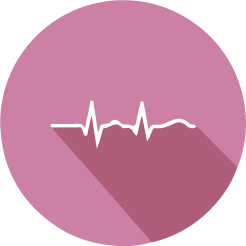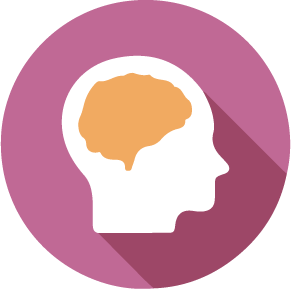Predicting Consumer Choice with Neuroimaging? It’s Simpler Than You Think!
Relevant topics Research, Archive
It’s one of the most intriguing questions in neuromarketing today: how can we predict people’s choices by having a peek into their brain activity?
Our brains are made up of many clusters of neurons, each devoted to specific – but often yet weakly understood – functions and processes. Scientists and marketers unite in pursuit of so-called ‘buying buttons’. These specific brain areas are particularly responsive towards alluring products, commercials or otherwise money-spinning marketing stimuli.
One such jackpot area is the nucleus accumbens (NAcc), which lies deeply embedded in the brain. This ancient structure, not much larger than a tic-tac, is fueled by dopamine and acts as the primary engine behind many human pleasures, such as gambling, sex and videogames. And which brand of butter we toss in our shopping carts – apparently.
Analogously, unattractive products spark the insula. This is the same area that becomes active when we see something repulsive or get kicked in the groin; not a good neural neighborhood for your brand. Simultaneously, the mesial prefrontal cortex (mPFC) goes quiet when facing an unattractive choice.
Together, these three independent brain areas (NAcc, Insula and mPFC) have been found to predict product choice above and beyond classic self-report measures. Brian Knutson and his colleagues already reported these insights back in 2007, which I deem the single most important discovery in neuromarketing to this day.
One caveat: the nucleus accumbens and insula are covered by a thick layer of neocortex, making it unreachable for the majority of neuroimaging techniques. It’s fMRI territory. Due to its expensiveness and massive volume, fMRI is not readily available for brands and research companies. You know there’s marketing gold out there, but you just can’t reach it.
Luckily, neuroscientists are still discovering surprising new ways in which neural activity tells us what people will do and which products they will embrace. Today, I want to share one that doesn’t linger in the depths of the brain, but that can be found literally on ‘the top of your dome’: your prefrontal cortex.
Newneuromarketing is looking for new authors! Are you up for the job?
Send us an e-mail at tim@newneuromarketing.com to become an author and start spreading knowledge.
Asymmetrical brain activity predicts choice too!
Your brain consists of two halves, which operate largely independent of each other and are specialized in different processes. The left hemisphere is well known as a shelter for language and analytical thinking, whereas the right hemisphere is a powerhouse for holistic processing and visualization.
As it turns out, hemispheric lateralization goes far beyond this already well-known compartmentalization of human skills. Many more subtle motivational tendencies have been traced back to more subtle interactions between both hemispheres, specifically asymmetry between the prefrontal cortex.
The brain knows two motivational tendencies: approach and avoid. Amazingly, which road the brain goes can be read straight from prefrontal activity. When the left prefrontal cortex shows greater activity than the right, the person is more eager to approach – be it a brand of marmalade, or a potential life partner. Is the right prefrontal cortex overshadowing the left one? Then chances are the person is currently motivated to avoid whatever she’s facing or thinking about. While simple in its explanation, this asymmetry principle is amazingly pervasive.
The motivational tendencies signaled by prefrontal asymmetry appear just as relevant in the context of consumer choice (Ravaja et al., 2016). In a study earlier this year, people were allowed to pick a product they liked out of a wider assortment of options. In the second phase, they got a chance to trade the product for something else. People that showed greater left prefrontal dominance in phase one, were relatively more emotionally attached and less likely to depart from their chosen product.
Interestingly, this only happened when people themselves chose the product in phase one, and not when it was handed out to them randomly. I want to stress that the participants in this study weren’t put into a contrived imaginary situation, but made choices that actually mattered. The average participant went home with $125,- worth of products. Now that’s a good experiment.
Prefrontal asymmetry in market research: is neuromarketing finally going mainstream?
EEG brain wave testing into prefrontal asymmetry may be a fruitful contestant for market research. This is good news for marketing and advertising researchers, as EEG technology costs a fraction of fMRI. The asymmetry score can be calculated right from the raw EEG data (for regular EEG sets, electrode F3/F7 and F4/F8). No need for additional software or compilers.
While predictive neuromarketing research loitered within arm’s reach for Fortune 500 companies only, this insight adds instant value to an already widely accessible and much more affordable technology: EEG.
Yet, it needs to be said that, so far, there are no studies exploring the predictive power of prefrontal asymmetry on the long run. For instance, does asymmetry while watching an ad predict aggregate purchase behavior much later? I remain hopeful as always, as the effects within the immediate choice context portray a picture filled with potential.
Further Reading
-
How Neuroimaging Can Save the Entertainment Industry Millions of Dollars
Wow. Just wow.
Let me share two experiments that have changed my view on the power of brain imaging forever.
Can your brain predict who will be the next Lady Gaga?


